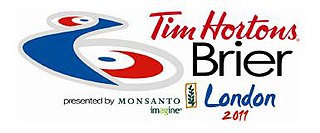Provincial and territorial orders
| Name | Year created | Ribbon bar | Post-nominal letters | Number of inductees |
|---|---|---|---|---|
| Provincial | ||||
| Alberta Order of Excellence | 1979 | | A.O.E. | 59 [4] |
| Order of British Columbia | 1989 [lower-alpha 1] | | O.B.C. | 218 [5] |
| Order of Manitoba | 1999 | | O.M. | 85 [6] [7] |
| Order of New Brunswick | 2000 | | O.N.B. | 37 [8] |
| Order of Newfoundland and Labrador | 2001 | | O.N.L. | 35 [9] |
| Order of Nova Scotia | 2001 | | O.N.S. | 20 [10] |
| Order of Ontario | 1986 | | O.Ont. | 209 |
| Order of Prince Edward Island | 1996 | | O.P.E.I. | 32 |
| National Order of Quebec (French : Ordre national du Québec) Presented in three grades:
| 1984 | | G.O.Q. O.Q. C.Q. | 69 (G.O.Q.) [11] 195 (O.Q.) [11] 324 (C.Q.) [11] |
| Saskatchewan Order of Merit | 1985 | | S.O.M. | 122 [12] |
| Territorial | ||||
| Order of the Northwest Territories | 2013 | | O.N.W.T. | 20 [13] [14] |
| Order of Nunavut | 2010 | | O.Nu. | 17 [15] [16] |
| Order of Yukon [lower-alpha 2] | 2018 | | O.Y. | 10 [18] |
In all provinces except Quebec, the provincial honours are presented by the relevant Lieutenant Governor. [3] The territorial honours are presented by their respective Commissioner.
Most provincial orders only have one grade, or level, which is membership. The only province that has a multi-level order system is Quebec: the National Order of Quebec has three grades (in descending order of grade): Grand Officer (GOQ), Officer (OQ), and Knight (CQ).
The Canadian Forces has listed the following orders to be worn in the following manner: National Order of Quebec, Saskatchewan Order of Merit, Order of Ontario, Order of British Columbia, Alberta Order of Excellence, Order of Prince Edward Island, Order of Manitoba, Order of New Brunswick, Order of Nova Scotia and the Order of Newfoundland and Labrador. However, the CF has stated that while this is the order of sequence on a ribbon bar, it is unlikely or even impossible that a member will receive a medal or an order from all Canadian provinces. [17]
Various people who have been awarded provincial orders have been presented with national decorations and orders, such as the Order of Canada. An example of this would be Gordon Lightfoot being awarded the Order of Ontario. Lightfoot is also a Companion of the Order of Canada. [19] Each province has a limit on how many can be awarded with their order per year: Ontario places no limit on the number that can be distributed (although it is usually around 25), Alberta and Saskatchewan are limited to 10 inductees each year, and the territories limit theirs to 3 per year.
- ↑ Replaced the Order of the Dogwood (O.D.), founded in 1966.
- ↑ An unofficial order for the Yukon Territory, the Order of Polaris, had been created prior to the Order of Yukon in 2018 but was not a territorial order. It is not listed on the medals and orders chart for members of the Canadian Forces. [17]










